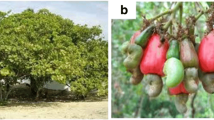Abstract
Fatty acid methyl esters, also known as biodiesel, have been shown to have a great deal of potential as petro-diesel substitutes. Biodiesel comprise a renewable alternative energy source, the development of which would clearly reduce global dependence on petroleum and would also help to reduce air pollution. This paper analyzes the fuel properties of rapeseed biodiesel and its blend with petro-diesel, as well as the emission profiles of a diesel engine on these fuels. Fuels performance studies were conducted in order to acquire comparative data regarding specific fuel consumption and exhaust emissions, including levels of carbon monoxide (CO), carbon dioxide (CO2), smoke density, and NOx, in an effort to assess the performance of these biodiesel and blend. The fuel consumption amount of oil operations at high loads was similar or greater than that observed during petro-diesel operation. The use of biodiesel is associated with lower smoke density than would be seen with petro-diesel. However, biodiesel and its blend increased the emission of CO, CO2, and nitrogen oxides, to a greater degree than was seen with petro-diesel. The above results indicate that rapeseed biodiesel can be partially substituted for petro-diesel under most operating conditions, regarding both performance parameters and exhaust, without any modifications having to be made to the engine.
Similar content being viewed by others
References
Lang, X., Dalai, A. K., Bakhshi, N. N., Reaney, M. J., and Hertz, P. B. (2001), Bioresource Technol. 80, 53–62.
Cvengros, J. and Povazanec, F. (1996), Bioresource Technol. 55, 145–152.
Kim, H. R. (2002), Prospectives Ind Chem. 5(1), 27–34.
Fukuda, H., Kondo, A., and Noda, H. (2001), J. Biosci. Bioeng. 92(5), 405–416.
Freedman, B., Pryde, E. H., and Mounts, T. L. (1984), J. Am. Oil Chem. Soc. 61(10), 1638–1643.
Jeong, G. T., Park, D. H., Kwang, C. H., et al. (2004), Appl. Biochem. Biotechnol. 114, 747–758.
Darnoko, D. and Cheryan, M. (2000), JAOCS 77(12), 1263–1267.
Graboski, M. S. and McCormick, R. L. (1998), Prog. Energ. Combust. Sci. 24, 125–164.
Monyem, A. and Gerpen J. H. V. (2001), Biomass Bioenerg. 20, 317–325.
Lin, C. Y. and Huang J. C. (2003), Ocean Eng. 30, 1699–1715.
Usta N. (2005), Biomass Bioenerg. 28(1), 77–86.
Krawczyk, T. (1996), INFORM 7, 801–829.
Puhan, S., Vedaraman, N., Ram, B. V. B., Sankaranarayanan, K., and Jeychandran, K. (2005), Biomass Bioenerg. 28(1), 87–93.
Machacon, H. T. C., Shiga, S., Karasawa, T., and Nakamura, H. (2001), Biomass Bioenerg. 20(1), 63–69.
Author information
Authors and Affiliations
Corresponding author
Rights and permissions
About this article
Cite this article
Jeong, GT., Oh, YT. & Park, DH. Emission profile of rapeseed methyl ester and its blend in a diesel engine. Appl Biochem Biotechnol 129, 165–178 (2006). https://doi.org/10.1385/ABAB:129:1:165
Issue Date:
DOI: https://doi.org/10.1385/ABAB:129:1:165




